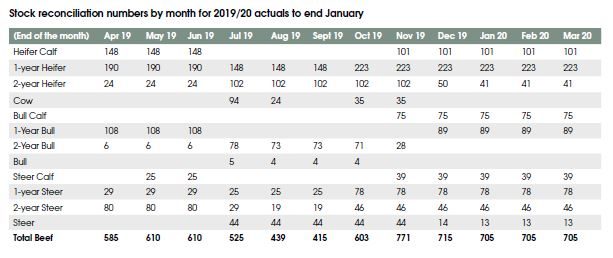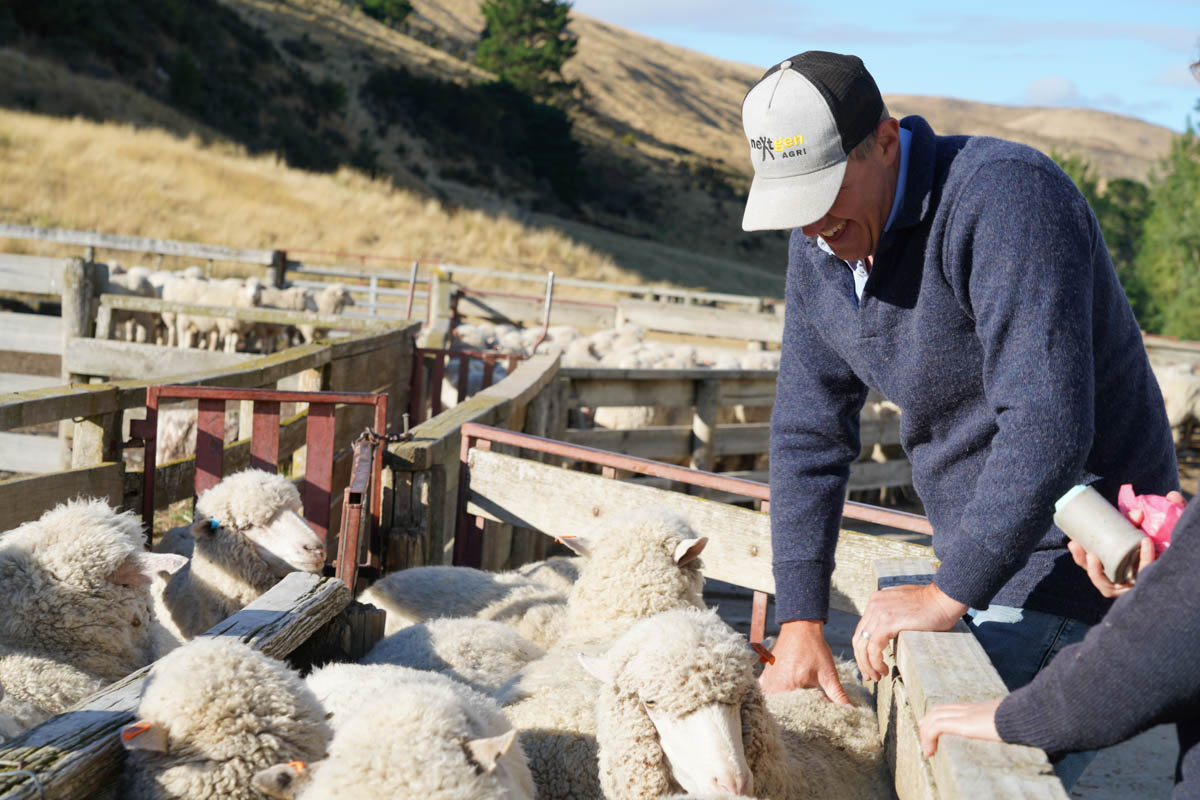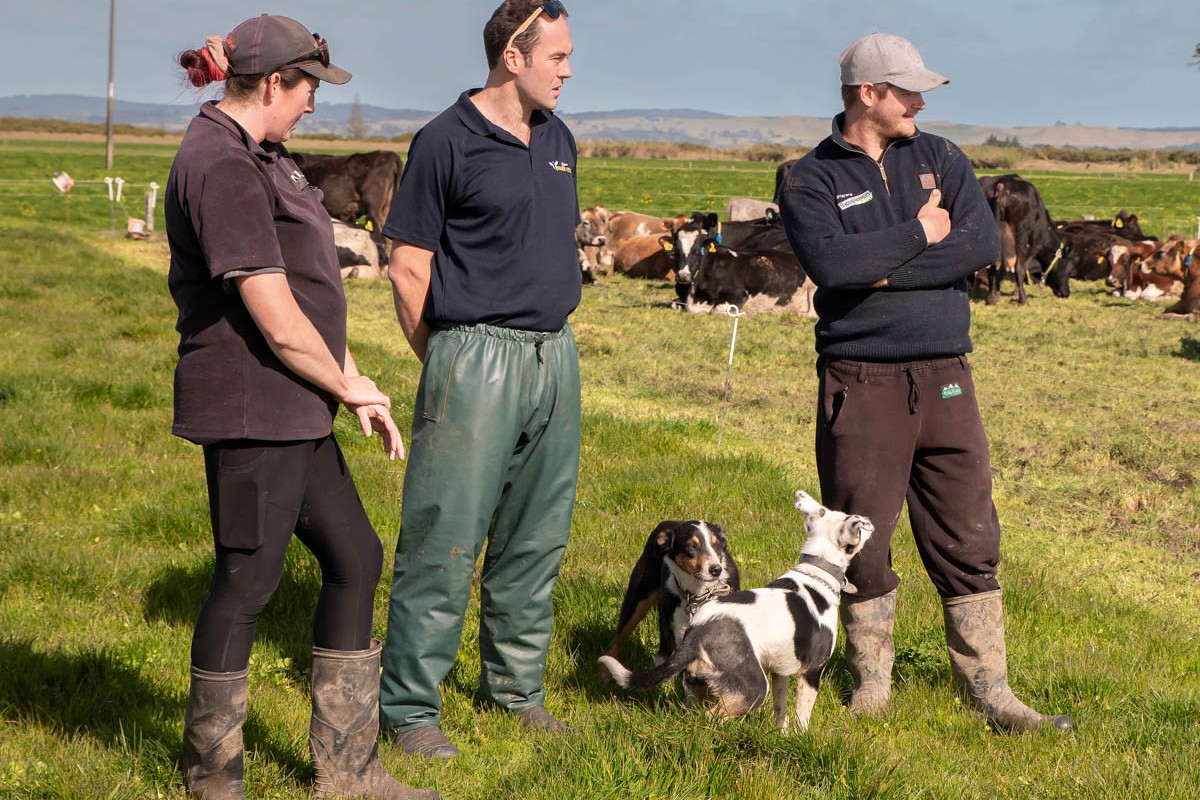Farming and building have similarities. You’ve got a framework and you shape it in a way that suits your purpose, to create the best product you can, Annabelle Latz writes.
Duncan Robertson used to spend his working life with a hammer in his hand until 2016, then he put his building business aside and resumed farming.
Born and raised in the Rangitikei River area in the Manawatu, Duncan studied a Bachelor of Commerce after school and ended up getting a trade as a builder. It was while building a butcher’s shop in Auckland that he got exposed to the Wagyu beef concept – grass-fed very tender beef that the Americans loved. He decided to get involved.
“I was quite fascinated by it.”
He and his family have a dairy and Wagyu beef farming operation on the outskirts of Kerikeri, but initially looked all over New Zealand at different sheep and beef farms.
After some careful advice they opted to buy the 14-hectare dairy farm they’re on now. In addition to this they lease 170ha down SH1 for grazing, and further grazing blocks in Paihia, Kaikohe and Kaeo totalling 195ha. This means there’s plenty of room for the beef side of things.
 In the earlier days of this farming operation Duncan says they’d sell most stock as yearlings, but accumulating lease blocks over the years has provided the ability to finish more stock himself.
In the earlier days of this farming operation Duncan says they’d sell most stock as yearlings, but accumulating lease blocks over the years has provided the ability to finish more stock himself.
Two years after they moved on to the dairy farm, they trialled a couple of mobs plus a handful of straws over their dairy cows. Last Autumn 2019 they reared 180 calves and last spring 2019 it was about 160.
“It’s good to see them come all the way though, do well, hit those weight targets.”
For five years now they’ve been milking 360 cows, and in addition have 1000 beef cattle, in particular for the Wagyu beef market.
Producing tender grass-fed beef is the attractive selling point that pulls the premium prices, as the marbling is “tiny flecks, and unlike most beef, this ensures the meat is always juicy and tender”.
Duncan works closely with First Light, which set prices annually for Duncan, which suits him well. He plans to become a shareholder later in the year. His farming model gives him options for both dairy and beef markets, and breeding his own Wagyu finished stock insulates against the commodities market; they’re not at the mercy of fluctuating sale prices, and being aligned with First Light means prices are set at the beginning of the year.
Progeny must be 50% Wagyu to be classified as such, and mixed with the Kiwicross is giving Duncan results he is very happy with. The Kiwicross means they’re faster finishing. His stock are finished at about 30 months, as opposed to taking three years for the straight Kiwicross.
At this age, steers average 320kg carcaseweight (CW), and the heifers are 290kg.
“We tried 50% Wagyu Angus, but the marble score wasn’t reached. Marble scores are measured on a scale of 1-9.”
Opportunity for diversity
Wagyu First Light general manager Matt Crowther says farmers must have a minimum of 50 cattle to be involved in the programme. There is increasing interest from bull farmers looking to change to Wagyu for diversity.
He says the breed has been around in NZ since the mid-90s, but has only become well known in more recent years. There are about 50,000 Wagyu-cross cattle in NZ and the numbers are growing. Of these, 13,000 will be processed this year. On the export side, 60% is earmarked for the US, 15% stays here, and the rest goes to Europe, the United Arab Emirates and the United Kingdom.
Crowther says the increased interest in Wagyu beef is partly to do with farmers looking for stability in their returns.
“Typically new suppliers are looking to balance the commodity cycle of traditional beef pricing. We offer forward pricing for up to 24 months out, and more.”
More farmers and their bank managers are finding this an attractive addition.
“Our target production is 30,000 cattle processed per annum, then we will likely close the doors on new supply.”
A small percentage of Wagyu hits the top end of the marbling scale, level 9, which earns the farmer up to $9/kg. Most finished Wagyu sit between three to five.
“The average base return will be $6.25/kg for the whole year. Our shareholders will also receive a further payment to provide an average return of more than $7.00/kg.”
Crowther says the “semi-co-op” in nature works well, because the suppliers own the cattle through to the market so are incentivised to do a good job for each other to maximise returns.
Herd a mixed bag
Duncan says for the beef market, they’re looking at putting Hereford or Speckle park over our more Friesian-dominant cows F12, F14 and F16, and the rest to Wagyu.
The herd is a bit of a “mixed bag” as they target a cow around the F10 J6 mix. They have some Angus Wagyu which were brought in as weaners off another farm. Their four breeding bulls are put over 80-90 heifers, then three of the bulls are taken out in week six of mating and used over 360 cows once the AI has finished. Duncan uses breeding bulls and AI for his breeding programme, the main difference being the genetic gain, which is a couple more years advanced with the AI over the breeding bulls.
“As more data is collected from grading and the marketplace, there is a better understanding and knowledge of which sires produce a higher growth rate and better quality of meat, ie the marble score.”
This coming mating October 2020 they will use sexed semen to get dairy replacements, which hasn’t been readily available in Northland before, and should result in producing fewer Kiwicross bull calves.
“We will end up with a lot more better quality beef animals, either Hereford Speckle Park or Wagyu, plus by only mating our top 100 dairy cows to the sexed semen our herd’s genetic gain should speed up as we are only replacing our dairy herd with the best genetics.”
The volcanic soils in this area of Northland are favourable, which allows the rye grass, clover, and pockets of kikuyu grass to grow a couple of weeks earlier. This does mean things dry up a little earlier, but locking some land up for maize silage means when feed is at a pinch there is always a good back up.
“We raise the calves here, and put the Wagyu over there,” Duncan says, pointing to the lease block a couple of kilometres further down SH1.
Key farming operating dates are on par with most in the area.
The mating season begins on October 1 and calving begins on July 10. Calves are reared on calf feeders and virtually out to the paddock straight away.
The drought has of course put a strain on feed supplies, which is where the maize silage has offered some reprieve. First Light raise their Wagyu beef on grass, without grains or palm kernel, however maize silage is still an option.
On a good year they won’t need to supplementary feed their stock at all, but they’ve been feeding silage to both their dairy and beef stock since the beginning of the year.
“Luckily we sold all the older regular beef stock in November at high prices, now it’s just a matter of keeping the young stock growing,” Duncan says, adding they were still gaining 0.5kg/day which he was happy with.
Extension 350 was launched in 2016 and is led by Northland farmers.
“I had heard word of mouth they were requiring farmers to get involved. Since it was my first year starting off, I wanted to have more support around me, and wanted to see if Wagyu was feasible.”
Kim Leigh-Mackenzie, Farm Consultant for AgFirst Northland works with farmers on the programme, with the aim to help Northland farmers better understand their farming businesses and the opportunities to improve. Increasing profitability, environmental sustainability and farmer wellbeing are the three main planks of the project.
The personal satisfaction of achieving high marbling scores off grass drives Duncan to provide a premium quality beef animal with the best carcasses, out of a predominantly Kiwicross dairy herd.
Obstacles he has faced have been the dry summers, and fluctuations in the commodities which maize and Wagyu have helped buffer.
He is always talking to people and asking questions, because there are so many different ways to doing things.
Duncan’s five-year plan is to still be on the farm, continually learning and improving his farming practice.
“I find that exciting, there’s always something new going on. I like change, I’m not scared to change.”
KEY FACTS
• 170ha under Extension 350 project.
• Using Wagyu and Kiwicross genetics.
SECOND CLASS CITIZENS
• From mid-November 100 weaner bulls bought from the dairy farm at market rate from mid-November onwards. These bulls are taken through to 27-30 months of age before being sold to the works. These bulls are the exit strategy if something needs to go early.
• A controlled grazing system is implemented. About 120 paddocks are of varying sizes split into 10 rotations.
• The target livestock policy is 416kg CW/ha. It is expected within the Extension 350 project that the farm will build up to this over time. This year’s target was 318kg/ha. They ended up at 270kg CW. Off target but shows the impact droughts can have. February ended up being a negative production month with large numbers of stock having to be held due to lack of exit options. The farm has potential to do much more so the focus is moving to converting that potential into reality.
• About 40kg N/ha is used. In April 30kg N was applied over the whole farm in April, another 26kg N/ha was spread over 60ha in August.
• About 110 tonnes of whole crop maize silage (5ha at 22t/ha) is made and fed out on the beef unit.
THE PLAN
Following a whole-farm assessment a combination livestock policy plan was put in place.
A high priority was transferring 100 dairy heifers from the dairy farm as weaners in mid-November and returning to the dairy unit as in-calf heifers on May 1, 17-18 months later. Grazing payments are $7/head/week as calves until May then increased to $10.50/head/week as yearlings for the final year.
Also high priority are 120 First Light Wagyu sourced out of the dairy herd as weaners late November at 90kg liveweight (LW). These heifers are wintered twice then drafted between October and May as two-year cattle. Heifers are sold from 500kg LW and steers at 600kg LW onwards as First Light requires. About 100 Wagyu steers are transferred in as yearlings that have been running on the lease blocks as weaners.
In June 90 autumn-born Wagyu are bought from external sources as weaners.





